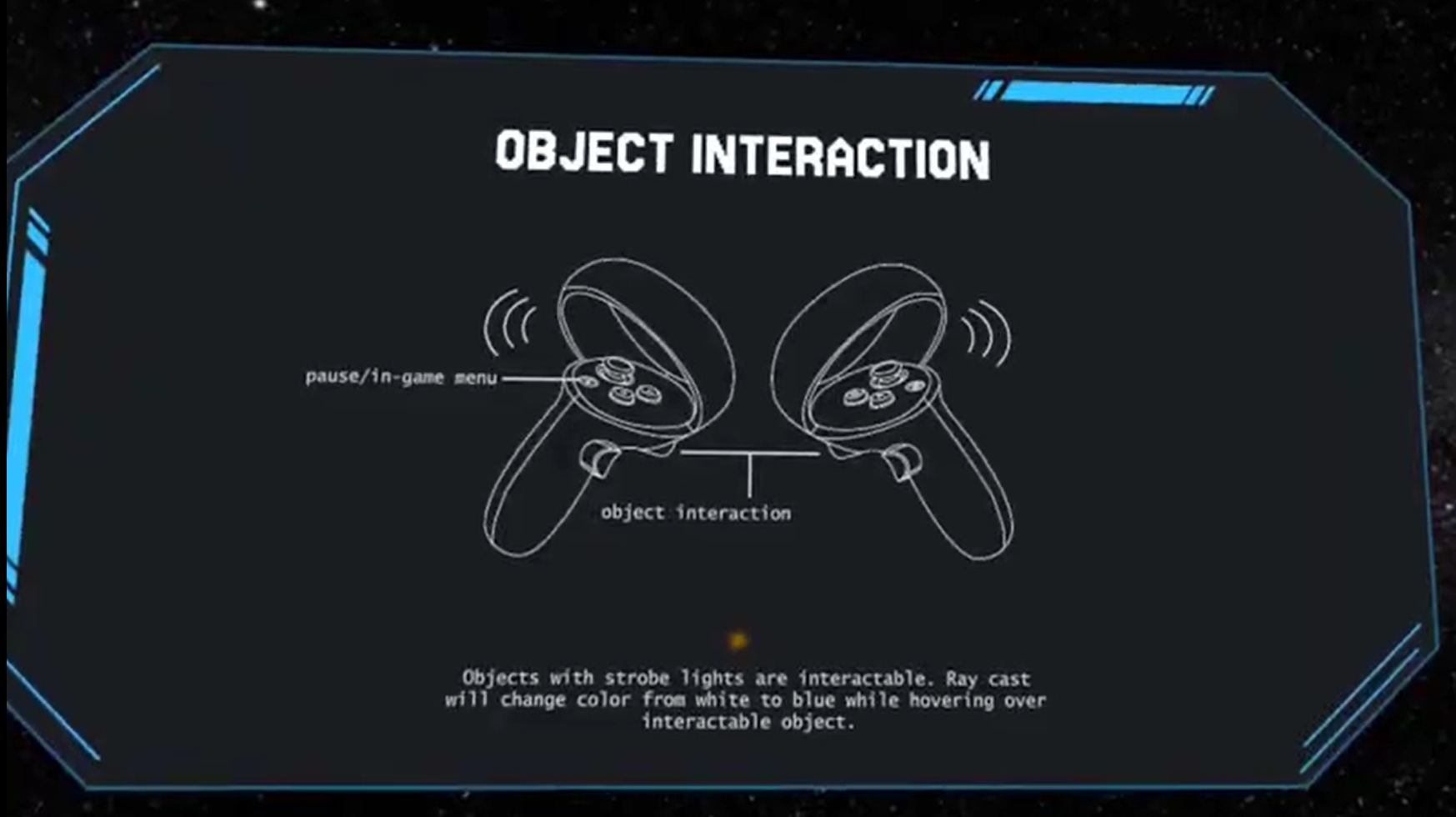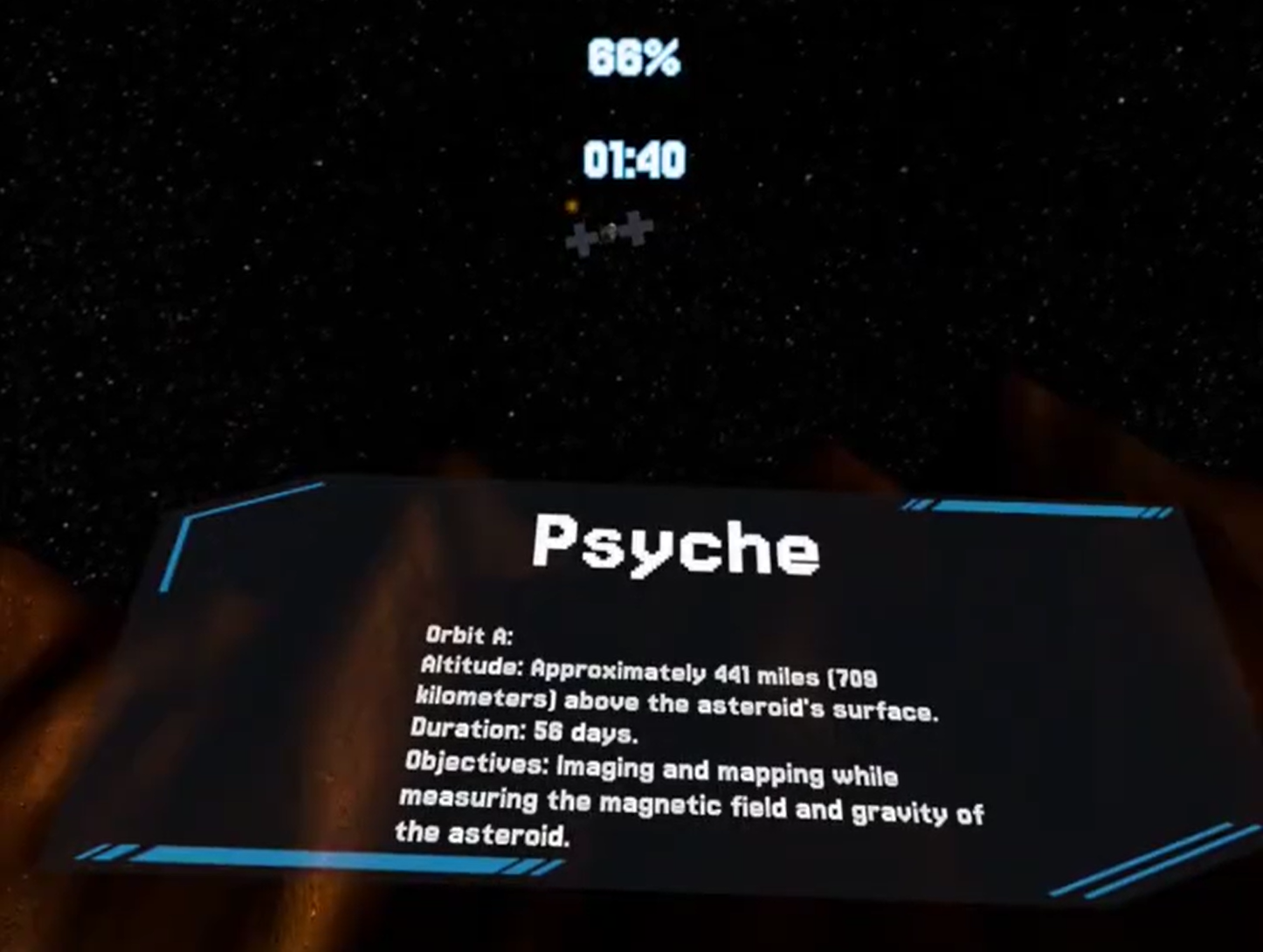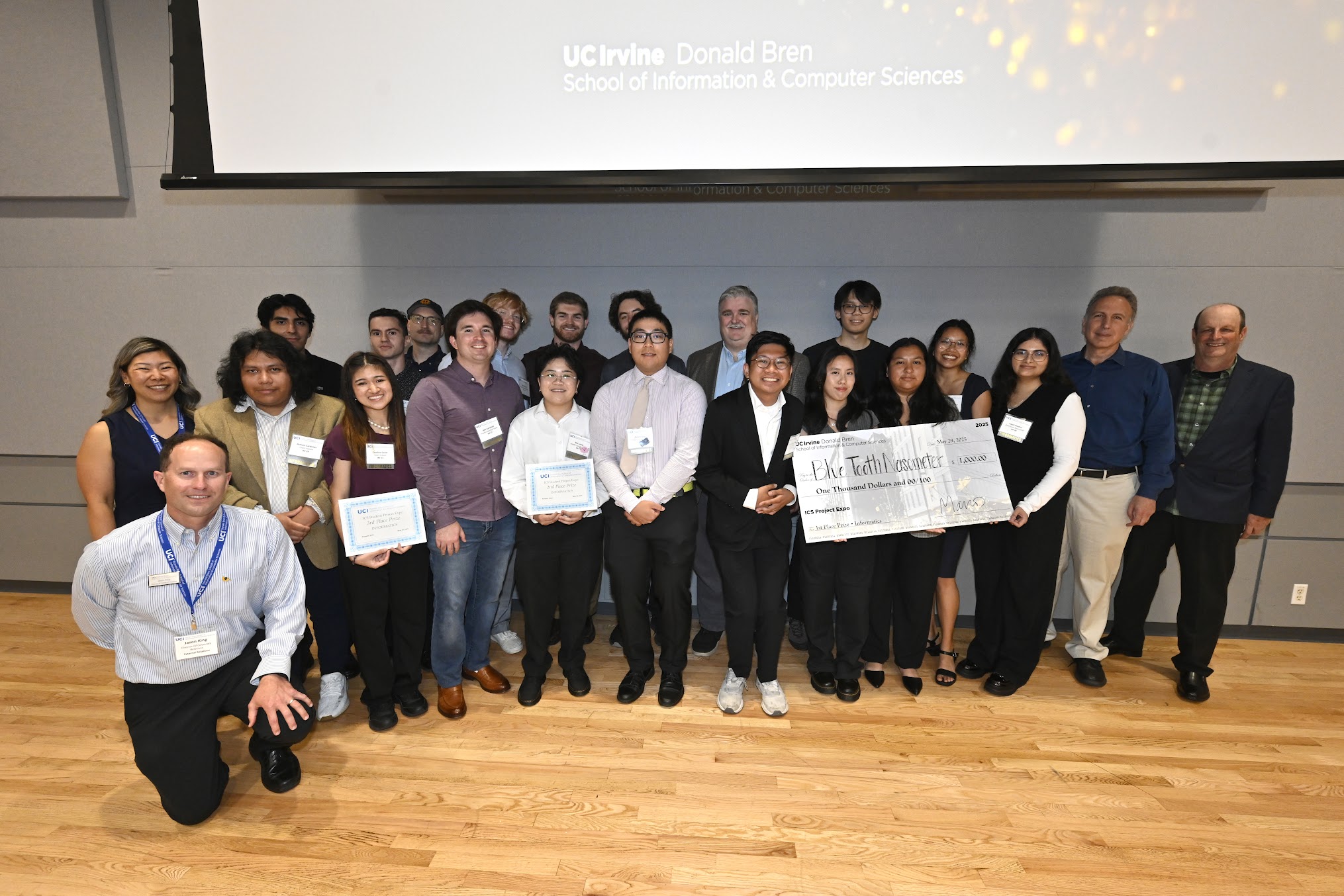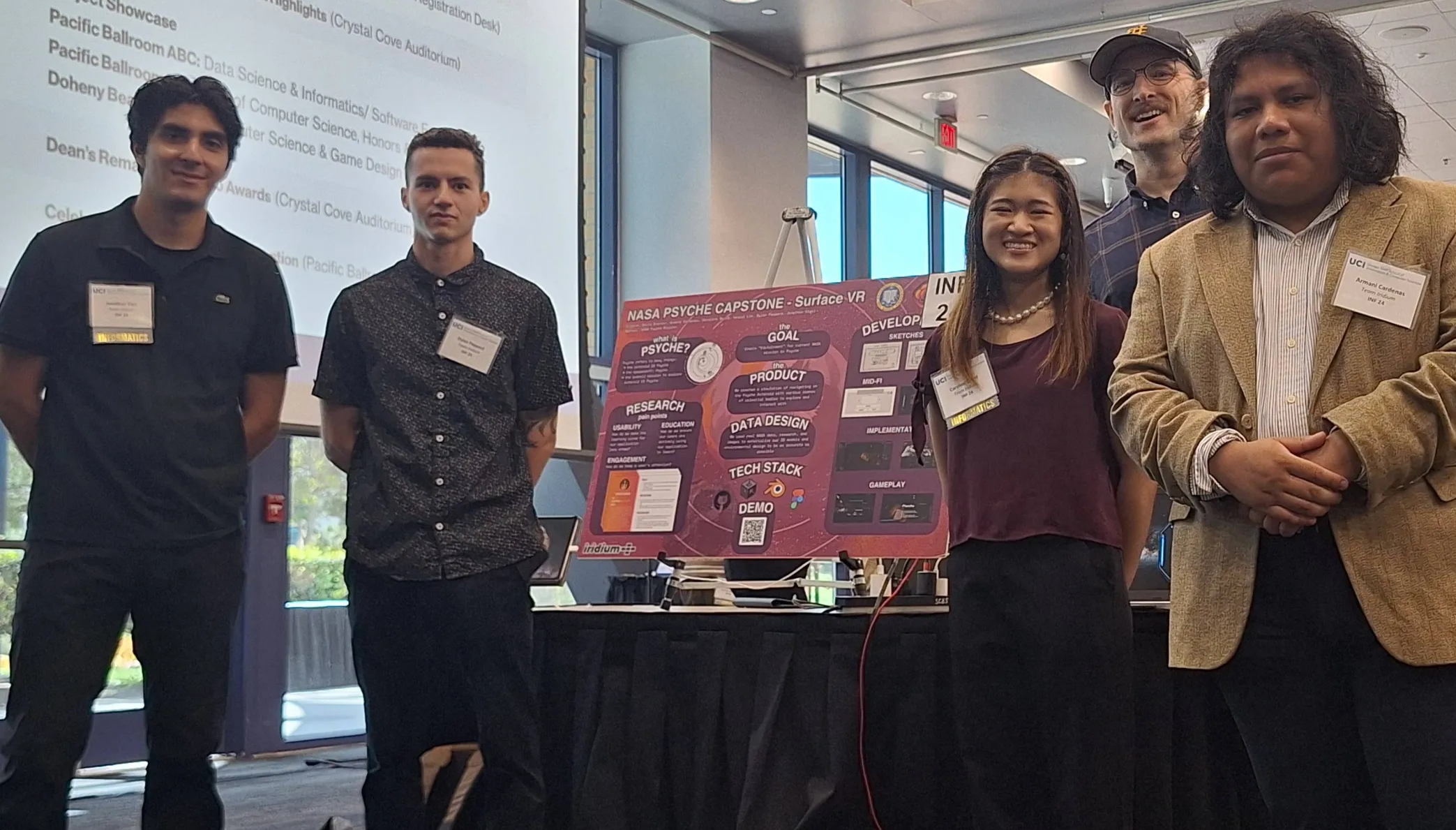DURATION
September 2024 - March 2025
7 months
TEAM
Armani Cardenas
Yeseul Lim
Dylan Peppard
David Branson
Jonathan Vigil
CONTEXT
Asteroid 16 Psyche is an asteroid made largely of metal and speculated to have been the remains of a planet never formed. By studying this asteroid, we are offered a rare opportunity to deepen our understanding and knowledge of planetary formation. Our task was to create a virtual reality environment to showcase existing data about other planetary bodies, including currently known data about Psyche.
How do we create an easy-to-use and engaging platform to educate audiences of all ages about the current NASA mission to Psyche?
RESEARCH AND IDEATION
We began our research process by conducting a competitive analysis of previous Psyche-related VR projects and space-related VR games available to the public. We also constructed user personas based on our survey respondents, who were from our target audience of users of all ages.
Engagement
How do we keep our users' attention?
Usability
How do we make the learning curve of VR less steep?
Engagement
How do we ensure our audience is activley learning?
To target our problem areas, we proposed many different game ideas. We then specified our project to create an interactive space exploration game where users can interact with various planetary bodies and scenes.
USER JOURNEY AND WIREFRAMING
Spearheading our design process as the team’s sole UI/UX designer, I began to construct user flows to solidify our application’s structure for design and development.
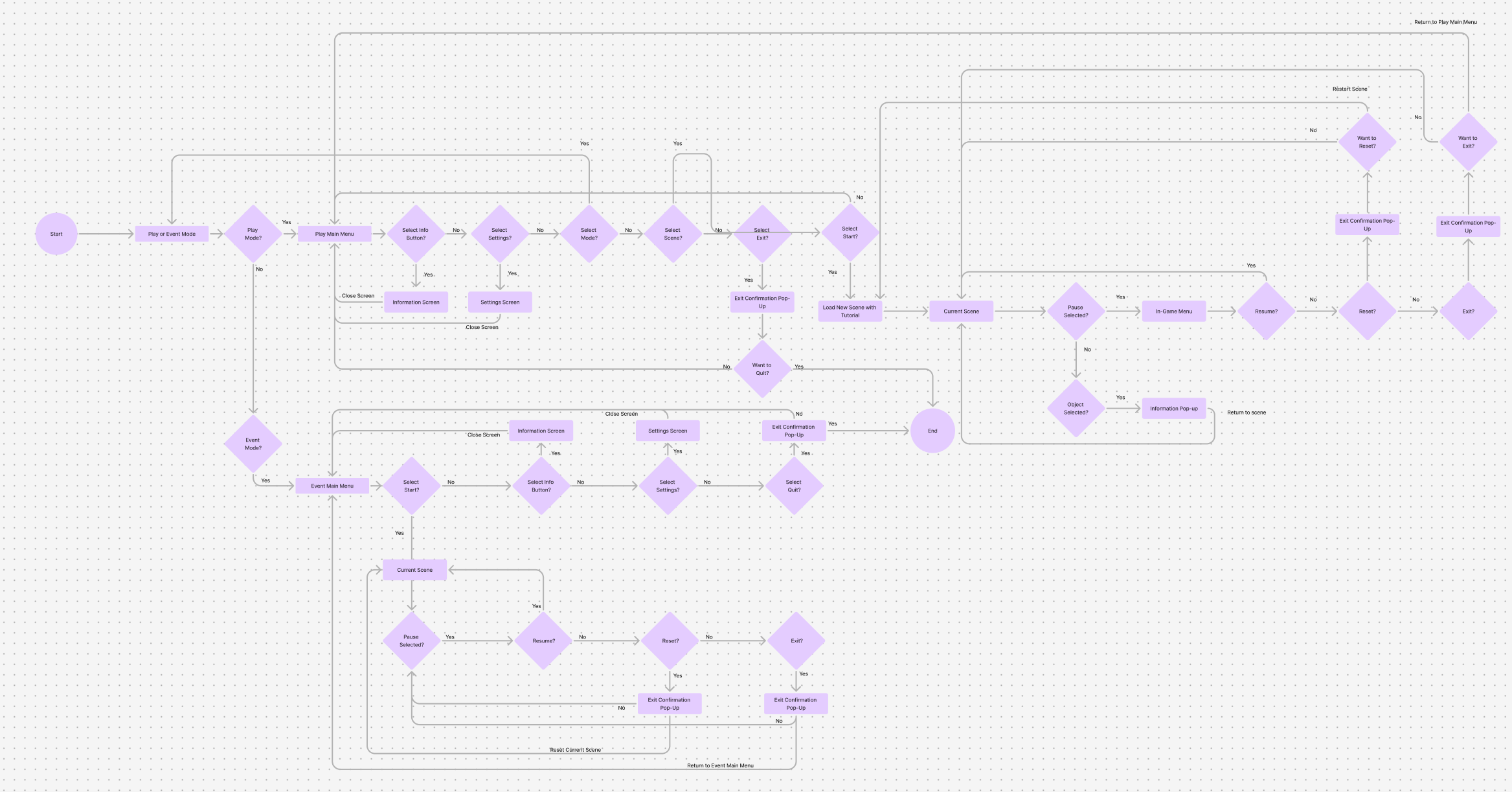
Overarching user flow for navigating through whole application
With these flows created, I began the sketching process and iterated through my wireframes to create our final high-fidelity prototype, which was then handed off to our development team.
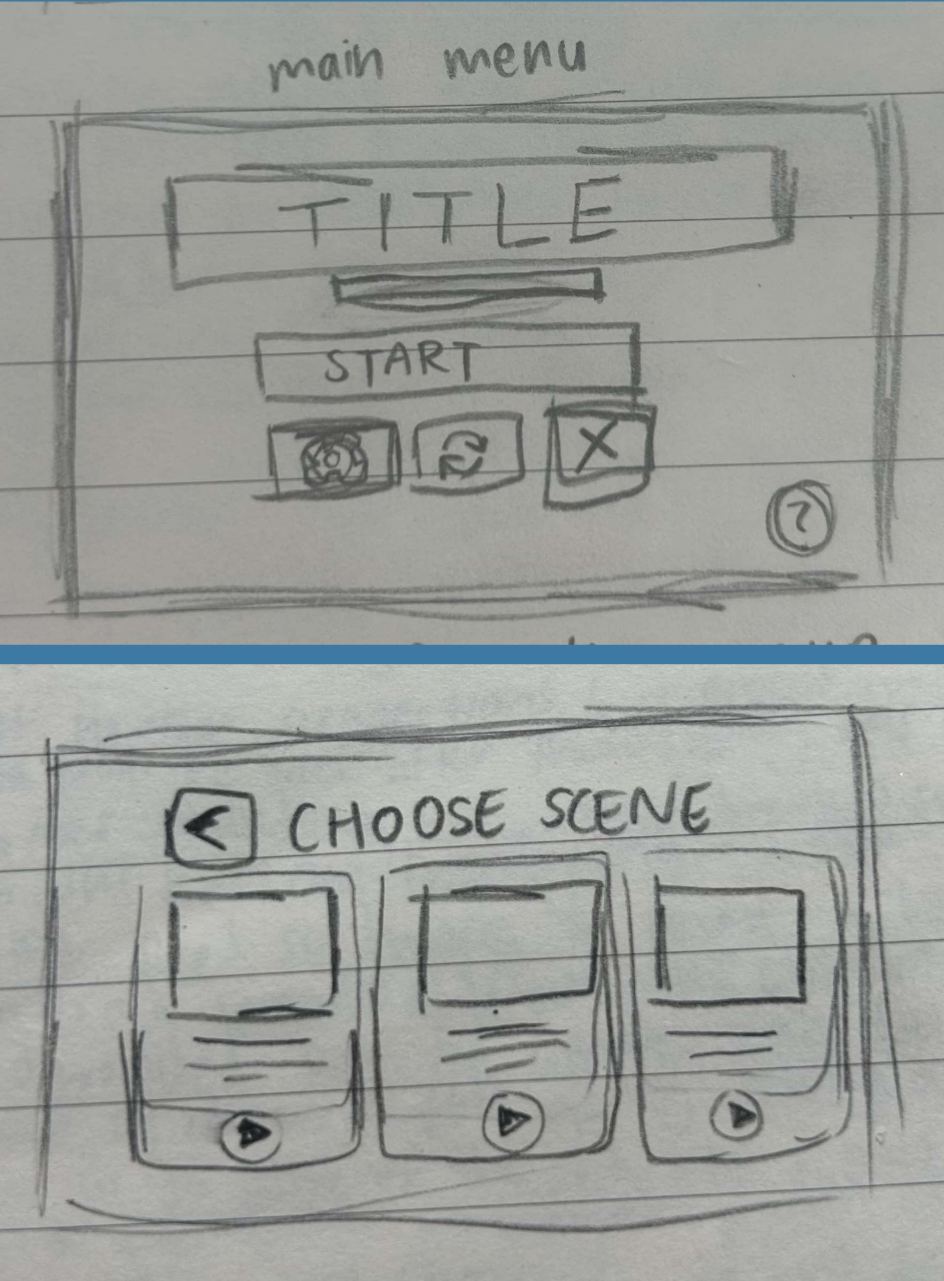
Too many clicks to start game and select scene
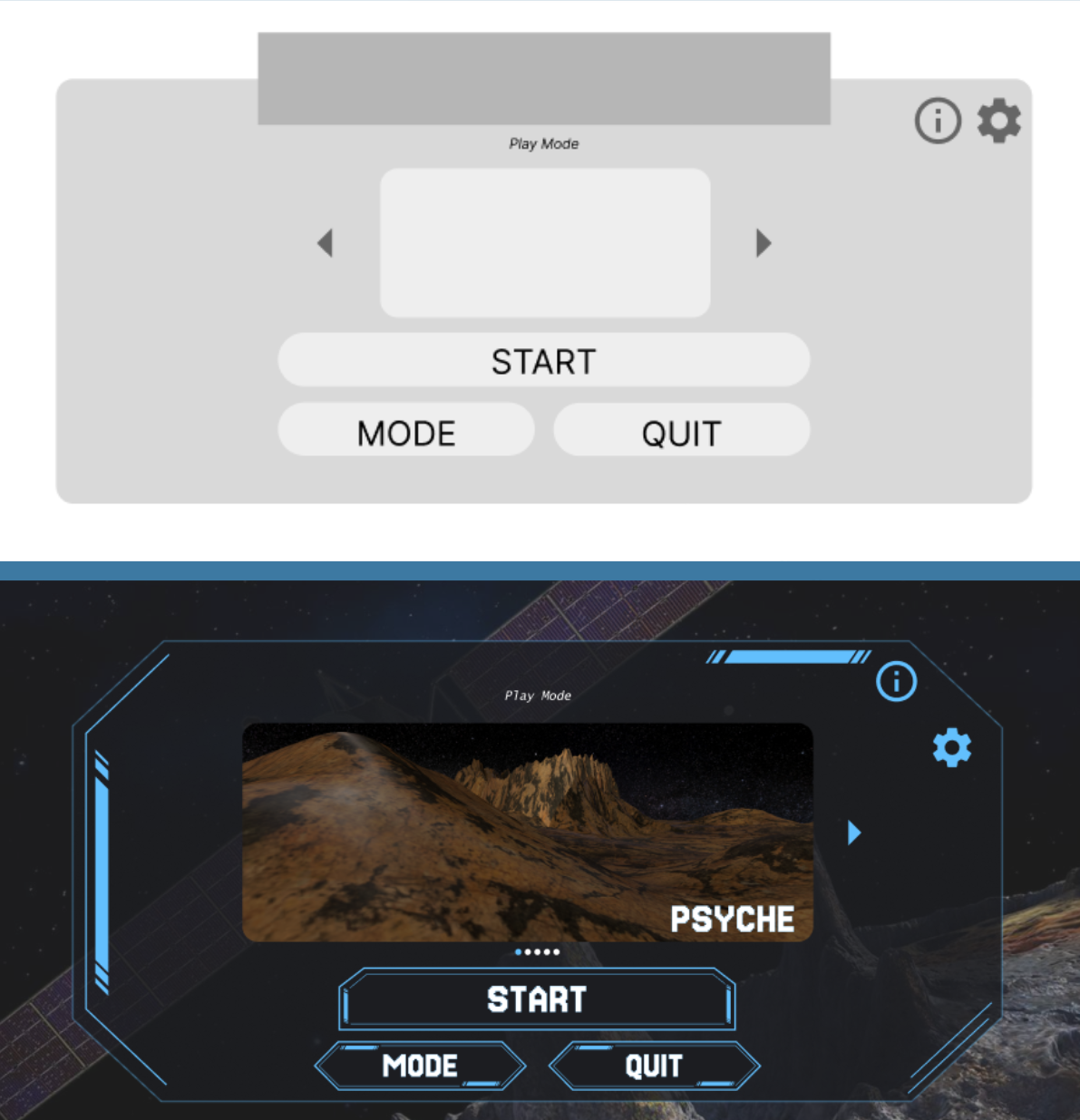
Simplified home for streamlined scene selection
ITERATIONS
With an opportunity to showcase our project at UCI’s annual Homecoming Celebration, where many different people—ranging from children to even our school’s dean—were able to walkthrough our demo, we collected feedback from these players—along with our own play-testers—to solidify our final iterations of the game.
“Needs more clear instructions, but overall good.”
- Homecoming Event User
Many users needed clarification on controls -> added tutorial panels on home screen and before scenes start
OBJECT INTERACTION
The main feature of our game was the user’s capability to use ray-casts to select objects and interact with them, revealing panels of educational material about artifacts on planetary bodies.
Ray cast and information panel with object selection
In order to move onto the next scene, a user needs to find every interactable object. This creates a gamified aspect to keep players engaged to work towards a goal. We utilized player feedback of enjoying the “scavenger hunt” feel to validate our solution to maintaining user engagement.
Percentage to show progress with finding interactable objects
We then wrapped up our project and handed it off to our project sponsor while preparing for the 5th annual ICS Project Expo.
REFLECTION
Our team was awarded the 3rd place Informatics prize at the ICS Project Expo out of 90+ teams. With this being the first time one of my designs was fully implemented, I felt very fulfilled upon completing this project. I loved being able to see the iterations of my designs being implemented and was even more rewarded seeing everyone test out our demo and voice their love for the design and look of the application.
With this being our team’s first time designing and developing for VR, we definitely had some trouble in the start with our learning curve in figuring out how to accommodate for virtual reality mechanics. However, with clear communication with our sponsor and thorough usability testing, we were able to address our concerns and create our application with minimal roadblocks. I learned a lot about communicating with a development team and sharing ideas so that we ensured the users were always put first.
It was a pleasure to work on this project with my team and I would also like to extend a thank you to our professor, Darren Dannenberg, for his guidance and our sponsor Cassie Bowman for her time and resources.

.png)



